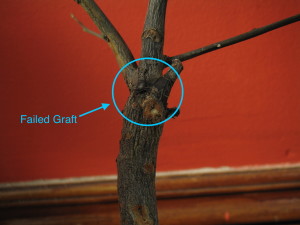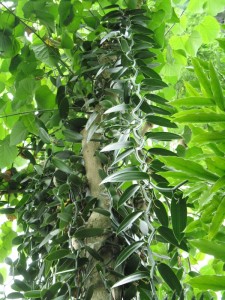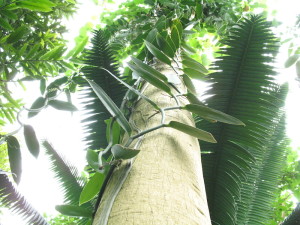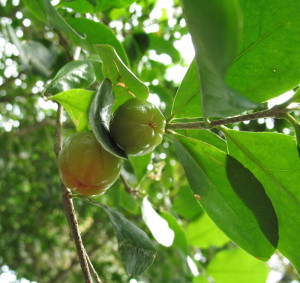About 2 years ago, I received a Moro Blood Orange Tree as a gift. This tree spends the summers outside and the winters inside near the west window of the house. This past fall, our weather stayed very warm late into the season. I made the mistake of over-estimating the cold-hardiness of the Moro orange tree. A couple nights, the temperature dipped into the high 20’s. Upon bringing the tree into the house, all the leaves fell, and branches turned black.
Failed Orange Graft
Now, Moro orange is supposed to be hardy to zone 9, or around 20F-25F for its lowest temperature. Much of this hardiness is owed to the fact that most dwarf Moro orange trees are grafted to Trifolate orange rootstock. Trifolate orange is one of the hardiest citrus, and can even be grown in warmer or protected areas of zone 5. It is unusual in that this tree is deciduous, which helps protect it in freezing temperatures.
When my tree was exposed to the cold temps, the union between the Trifolate rootstock, and the Moro scion (which was probably weak to begin with) failed, leading to the death of the scion. Earlier in the season, this tree had shown some areas of chlorosis, or leaf yellowing, and the area around the graft appeared to be girdling the tree a bit. It’s likely this graft would have failed eventually anyway, as the trunk was growing at a much different rate than the scion, and the graft was not strong.




